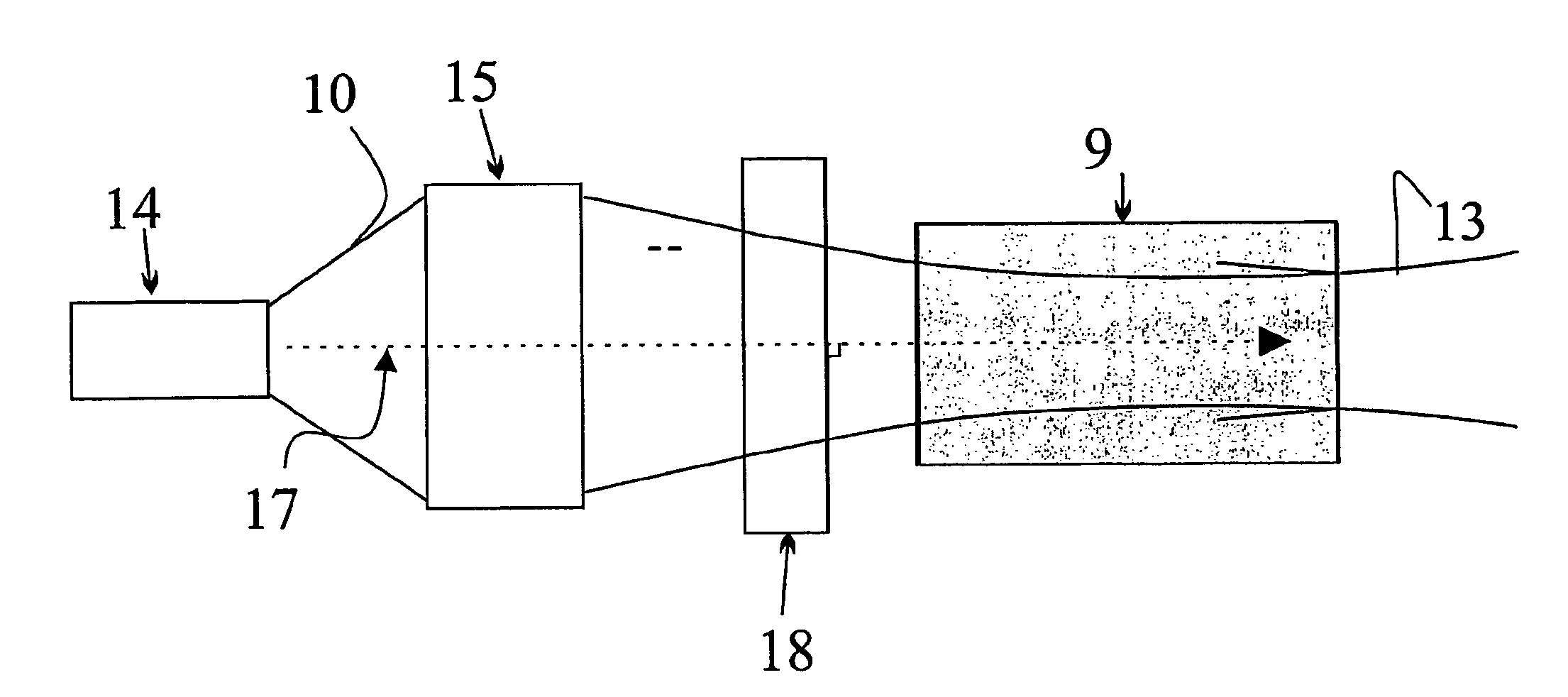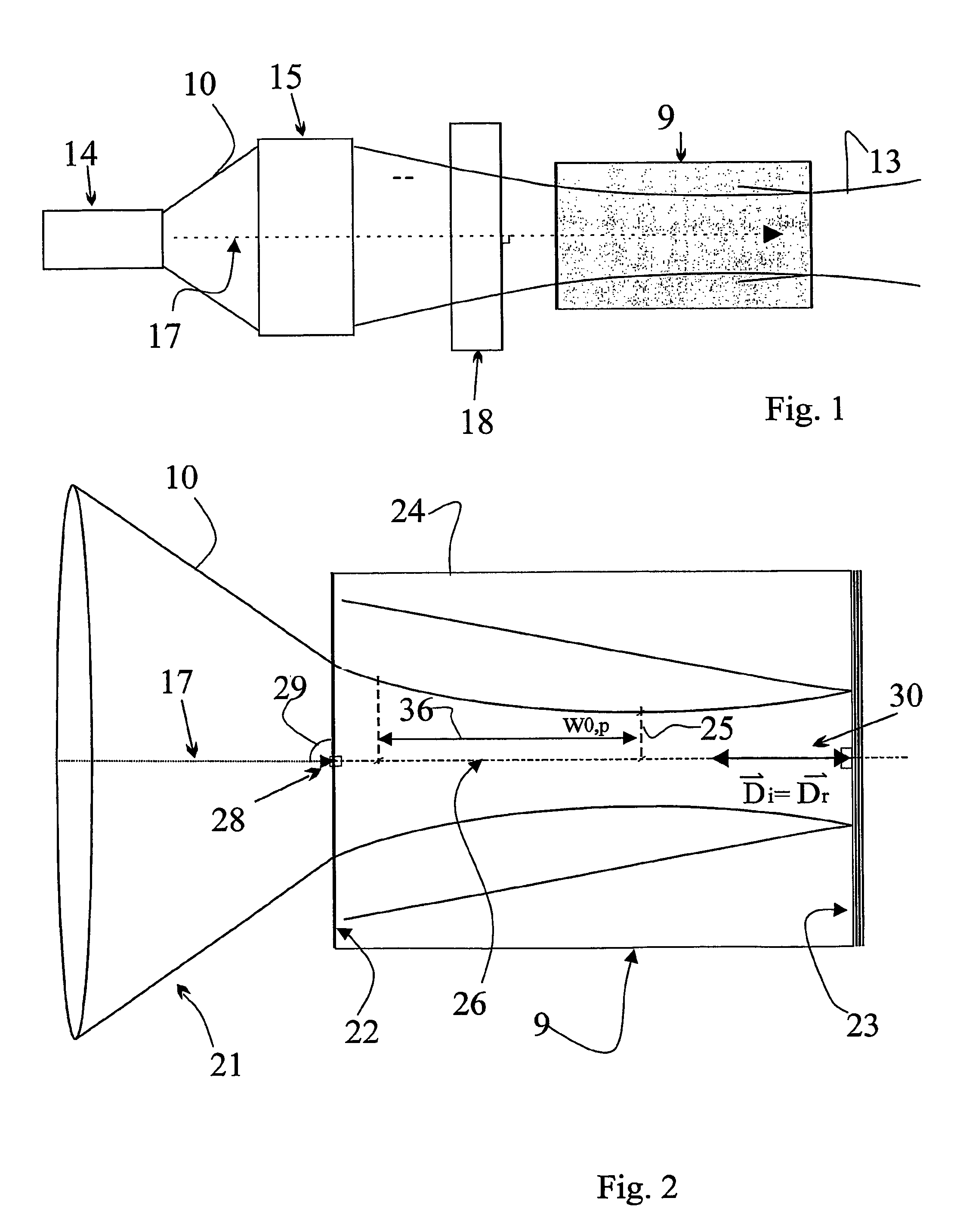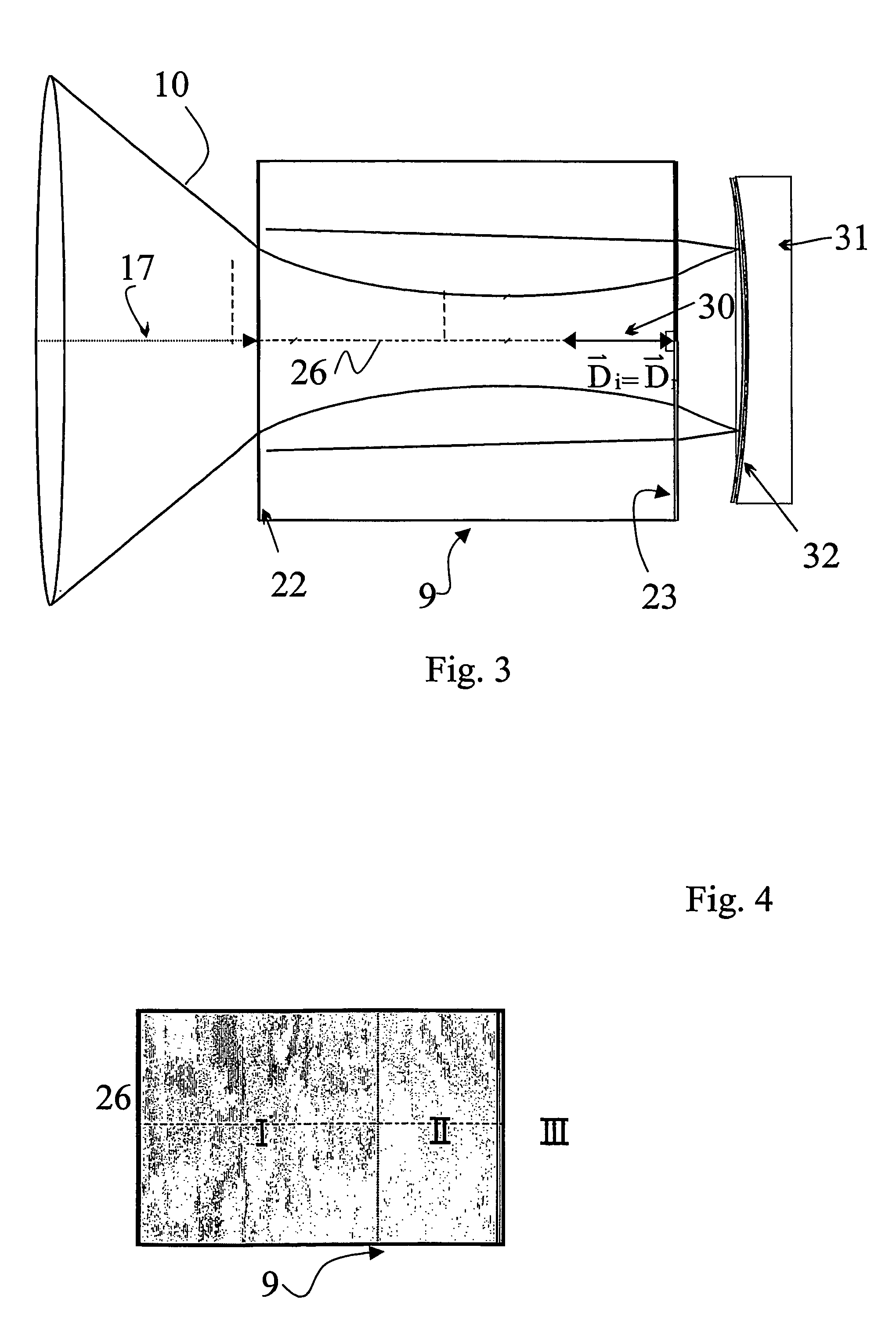Laser cavity pumping method and laser system thereof
a laser system and laser cavity technology, applied in the direction of laser details, solid-state laser construction details, optical resonator shape and construction, etc., can solve the problems of not ensuring the control of the number of higher-order modes being excited, and limiting the extraction of the average power required. , the effect of improving efficiency
- Summary
- Abstract
- Description
- Claims
- Application Information
AI Technical Summary
Benefits of technology
Problems solved by technology
Method used
Image
Examples
Embodiment Construction
[0039]The object of the present invention consists of an innovative structured pumping method co-linear to the resonator axis, specifically conceived for efficient operation of a laser cavity in a slightly multimode condition, with M2 of the output beam contained between 1.3 and 6; this pumping method is conceived as a function of the development of a laser device characterised by its simplicity and high operating flexibility; additionally, it implies considerable advantages in terms of thermal dissipation and operating stability with the changing wavelength of the pump source.
[0040]The pumping scheme provided by the method according to the present invention is schematically represented in FIG. 1; it consists of three separate subsystems, i.e. a pump source 14, a launching optic assembly 15 and an active medium 9 located inside a laser cavity.
[0041]The subsystem defined as the pump source 14 supplies a single light beam, i.e. the pump beam 10, which propagates along a pumping axis 1...
PUM
 Login to View More
Login to View More Abstract
Description
Claims
Application Information
 Login to View More
Login to View More - R&D
- Intellectual Property
- Life Sciences
- Materials
- Tech Scout
- Unparalleled Data Quality
- Higher Quality Content
- 60% Fewer Hallucinations
Browse by: Latest US Patents, China's latest patents, Technical Efficacy Thesaurus, Application Domain, Technology Topic, Popular Technical Reports.
© 2025 PatSnap. All rights reserved.Legal|Privacy policy|Modern Slavery Act Transparency Statement|Sitemap|About US| Contact US: help@patsnap.com



